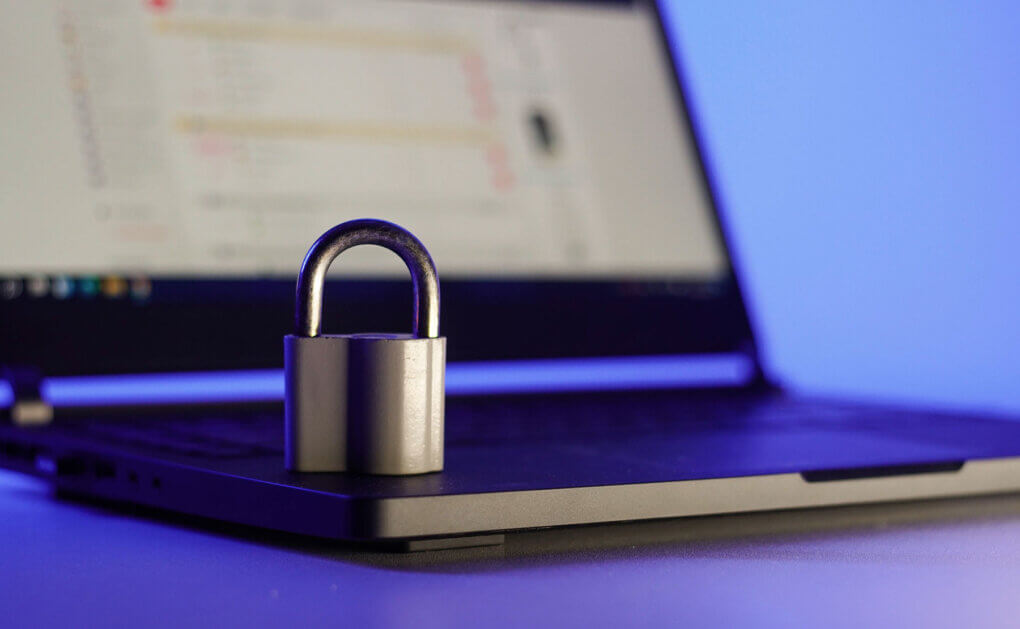Data breaches can have far-reaching consequences for any organization because they impact the company’s reputation, finances, and operational monitoring. A data breach can put a brake on a business operation until all data is secured and the business is safe. That means that a company might find it hard to recover while dealing with a data breach.
Once customers become aware of the data breach, it is possible to lose their trust in the business and it will take time and effort to regain it. That’s an added effect of any data security breach that managers and marketing departments have to take into consideration. The compromised information, including credit report details and payment data, can significantly impact customers’ confidence. Additionally, the breach may lead to concerns about the security of the right passwords, further amplifying the challenges in rebuilding trust.
What Is a Data Breach?
A data breach is a suspicious activity where confidential, sensitive, or protected personal information, transactions, or financial accounts are accessed, disclosed, exposed, or taken without authorization. Organizations must be vigilant, employing multiple layers of security to check and prevent unauthorized access. In the wake of a data breach, customers may face the risk of fraudulent activities, potentially on an international scale.
It can involve various types of data, which may include personal identifiable information (PII), financial information like credit card numbers, credit reports, personal and financial unique passwords, health social security numbers, intellectual property, trade secrets, or any other type of information that is not intended for public release.
Data breaches happen due to various reasons, such as cyberattacks, including hacking and malware attacks, as well as through more mundane means like a lost or stolen laptop, unintentional disclosure, or even an inside job by an employee.
The impact of breached data can be significant. It can lead to financial losses, damage to the company’s reputation, legal consequences, and, for individuals whose data was compromised, risks of identity theft and fraud.
In response to the growing threat of data breaches, many countries have implemented regulations and laws mandating certain standards of data protection and requiring organizations to notify individuals and authorities when a breach occurs.
Organizations can take comprehensive security measures to prevent data breaches and install advanced cybersecurity technologies. They can train employees in data protection practices and implement robust policies and procedures for handling sensitive information.
In the aftermath of a data breach, individuals may face heightened risks such as unauthorized payments and the compromise of password security. Implementing credit monitoring services can be crucial to promptly detect and address potential issues, offering an added layer of protection for individuals affected by the breach.
Regularly check your credit and ensure you’re aware of any suspicious charges you don’t recognize. If a breach occurs, act swiftly to unfreeze your credit and safeguard sensitive information like credit card numbers. This proactive approach can help you understand and combat potential credit card fraud.
Immediate Breach Response
You need to act fast and you need to take measures immediately to handle a breach data incident. The initial data breach response must be fast to minimize its impact. There are two steps to take right away:
Identify and isolate the breach
Quickly monitor and determine the source and scope of the breach. Isolate affected systems to prevent further unauthorized access. Review the spread of the damage to evaluate whether there are additional segments that are unaffected.
Engage your Incident Response Team
Activate your incident response team to manage the situation. This team should include IT professionals, legal counsel, and communication experts. You need your IT department or your managed IT services to mitigate the damage. As for the communication press expert, they will be able to manage customer relations and provide advice in order to minimize damage to your brand’s credibility.
Assessment and Investigation
Once the immediate threat is contained, it’s time to assess and investigate the breach thoroughly.
Conduct a detailed investigation
Work with cybersecurity experts to analyze how the breach occurred, what information was exposed, and the extent of the damage. This includes scrutinizing the potential compromise of savings accounts, monitoring any openings of new credit or bank accounts, and ascertaining if personal information such as phone numbers was exposed. Taking proactive steps, such as to freeze your credit or open new accounts can be crucial in preventing the unauthorized use of exposed information and mitigating the impact on credit bureaus.
You want to establish whether there is a weak point in your system that lets cybercriminals get hold of the information contained in it. If there is such a vulnerability, you need to fix it immediately. If an employee made a mistake by downloading something, make sure you improve your team’s awareness and training to avoid such an incident in the future. The cost of a data breach is more than $30,000 for small businesses. Training will cost you less.
Document everything
Keep detailed records of the breach investigation, including the steps taken, findings, and decisions. This documentation is crucial for legal and regulatory compliance. It’s also a blueprint for the future that could help you navigate similar situations.
Notify stakeholders
Businesses must notify stakeholders through transparent communication to let them know what has happened and how the company will repair the damage. Consider offering affected individuals free credit monitoring to check for unauthorized charges, helping rebuild trust in the organization’s commitment to security.
Inform affected parties
Notify individuals and entities affected by the breach. Explain to them what happened, what data was involved, and how you’re addressing the situation. This can be employees, customers, or third parties like companies your business works with.
Regulatory compliance
Depending on your jurisdiction and the nature of the data breached, you may be legally required to report the incident to specific regulatory bodies. This typically depends on the type of data that was stolen (health security number, phone number, credit card number, social media password, etc).
Remediation and Strengthening Security
With a clear understanding of the breach, make sure you’re doing your best for the remediation and preventing any future incidents. Explore ways to protect your personal digital presence, such as creating and maintaining unique strong passwords or implementing a password manager.
Consider the steps you can take to stay safe online, including regular unique password updates and implementing two-factor authentication for an added layer of security.
Close security gaps
Implement the necessary security measures to address the vulnerabilities that led to the breach. Work with your managed IT services to create an airtight network that won’t let another cyber-attack damage it or cause fraudulent charges.
Update policies and procedures
Revise your cybersecurity policies and procedures, activate breach notification, or implement a breach response plan. Data breaches are certainly frustrating and dangerous but the silver lining is that they give you a real-time incident you can learn from to put an effective plan in place. Draw valuable conclusions and update your existing plans and policies, as you are now based on concrete events.
Recovery and Follow-up
The recovery phase involves restoring consumer trust and resuming normal operations. Effective customer service during this period is crucial, providing support and timely information to address concerns and rebuild confidence among affected individuals.
Restore data and systems
Use backups to recover and restore any data that was compromised or lost. Ensure systems are secure before bringing them back online, especially in the case where information is exposed. Even a tiny malware presence can wreak havoc around your network system.
Build back trust
Communicate openly with stakeholders about the steps you’re taking to prevent future breaches. This can help rebuild trust and confidence in your organization and outside of it.
Be open and confident. You’re not the first victim of a data breach, nor the last one. Present concisely how the data breach happened, what personal information was exposed, and what you are doing next to prevent such an event from repeating. Describe the protective steps that were taken before the breach and produce a list of the steps that will be applied following the incident. Offer support if needed. This will give people the confidence that concrete steps are being taken and the data breach is taken seriously.
Corporate Technologies Has Your Back
Securing Tomorrow: Vigilance Against Data Breaches and Fraud
To protect your identity, follow these steps:
- Regularly check your credit
- Ensure you’re aware of any suspicious charges you don’t recognize.
- If a breach occurs, act swiftly to unfreeze your credit and safeguard sensitive information like credit card numbers.
This proactive approach can help you understand and combat potential credit card fraud. At Corporate Technologies, we’re here to help you navigate these challenges, offering support to freeze or unfreeze your credit and employing advanced measures to protect against breaches. Your security is our priority, so take these steps as soon as possible to fortify your defenses.
Data breaches are a real threat and a challenge to all businesses. No company is immune.
Data breach incidents compromise sensitive information and target the trust between organizations and their stakeholders. Data breaches can stem from various sources, from sophisticated cyber-attacks to simple human errors. The repercussions of such breaches are far-reaching and affect the financial stability and operation of organizations as well as the privacy and security of individuals.
A data breach is not just a crisis to be managed; it is also a valuable learning opportunity. Once you have understood the dynamics of data breaches, you can enhance your data security protocols and uphold a culture of awareness.
With the help of a professional managed IT company like Corporate Technologies, you can implement breach and fraud alert systems, identity theft protection tools, email monitoring, and information security systems to detect and prevent future incidents. You can also train your employees to be watchful and careful in their communications with emails, text messages, and shared files.
The fight against data breaches is ongoing and dynamic. Cyber threats evolve, and so must your strategies to counteract them. This involves a combination of technology, education, policy, and collaboration. Here at Corporate Technologies, we think like cyber-criminals to be one step ahead of them.
When you most need it, Corporate Technologies has your back!





